UniHelp
An exclusive digital companion for UNSW students, dedicated to boosting mental health awareness and support during stressful periods.
Team
Me
Duration
10 weeks
Role
UI designer, UX researcher
Tools
Figma, Illustrator
PART 01
Project Overview
WHAT IS THE PROBLEM?
In a post-COVID world, mental health has become an extremely prominent topic of conversation. University students face the prospect of job instability, higher competition, and the pressure to achieve high academic grades while also gaining work experience and participating in extracurricular activities. These factors create more stressors than ever before.
Following a study of UNSW students, it’s found that not only do students neglect their mental well-being whilst studying for exams, but they also lack awareness about the UNSW website’s wellbeing section and support services on campus.
In addition, the current UNSW website’s UI is outdated, cluttered and hard to navigate, making the process of seeking help and resources time-consuming.
International students are an underserved demographic at university, despite comprising a whopping 46% of the NSW university student population. They face a separate set of issues with additional barriers to mental health support, such as a lack of multilingual options This discourages them from seeking support.
HOW DO WE APPROACH THIS?
UniHelp is an exclusive digital companion for UNSW students, dedicated to boosting mental health awareness and support. This platform highlights a variety of on-campus and off-campus mental health resources, offers convenient appointment scheduling and empowers students with a rich collection of educational materials focused on mental well-being.
The solution aims to:
Increase awareness and use of mental health support services available on campus
Encourage users to self-regulate their stress through easily digestable, bite-size educational resources on self-care and mental health
Provide more access to resources for international students who require multilingual assistance
I adopted the double diamond design process, enabling a structured exploration of the problem followed by iterative development of potential solutions.
However, I discovered that the decision process isn’t always a straightforward journey and involves tweaks and adjustments to adapt to the uniqueness of problems and solutions.
PART 02: DISCOVER
Understanding the User & Space
PRIMARY RESEARCH
Conducting research through reliable sources on the internet, information about the severity of stress amongst students and the main contributing factors helped provide direction for concept ideation, ensuring that our solution would effectively target these problem areas.
Over the past decade, university students have faced a dramatic surge in stress and anxiety levels and one of the main factors is assessments/exams. Accompanying this is neglecting their mental health and the absence of self-care routines.
"80% of students said they experience "frequent stress""
The American Institute of Stress, 2023
ANALYSING THE CURRENT SYSTEM
Conducting research through reliable sources on the internet, information about the severity of stress amongst UNSW students and the main contributing factors helped provide direction for concept ideation, ensuring that our solution would effectively target these problem areas.
"63% of students reported high levels of anxiety"
American College Health Association, 2023
Further surveys from the American Addiction Centers suggest that the coping mechanisms used by college students today tend to perpetuate stress rather than reduce it.
In an age where mental health awareness has become more crucial, it is critical that students are reminded to prioritise their mental health, utilise self-care remedies and seek help when necessary.
LET’S GET SOME QUALITATIVE USER INSIGHTS
Cultural probing was conducted to collect fuzzy, qualitative data from which insights could be drawn about relevant users. The cultural probe kits were distributed online to a pool of 48 university students in two groups (24 international and 24 domestic), to be completed throughout a typical study day. The focus of these cultural probe kits was student mental well-being during assessment/exam periods.
Here is a template of the distributed probe kit. The kit includes a mood tracker, taking photos and drawing.



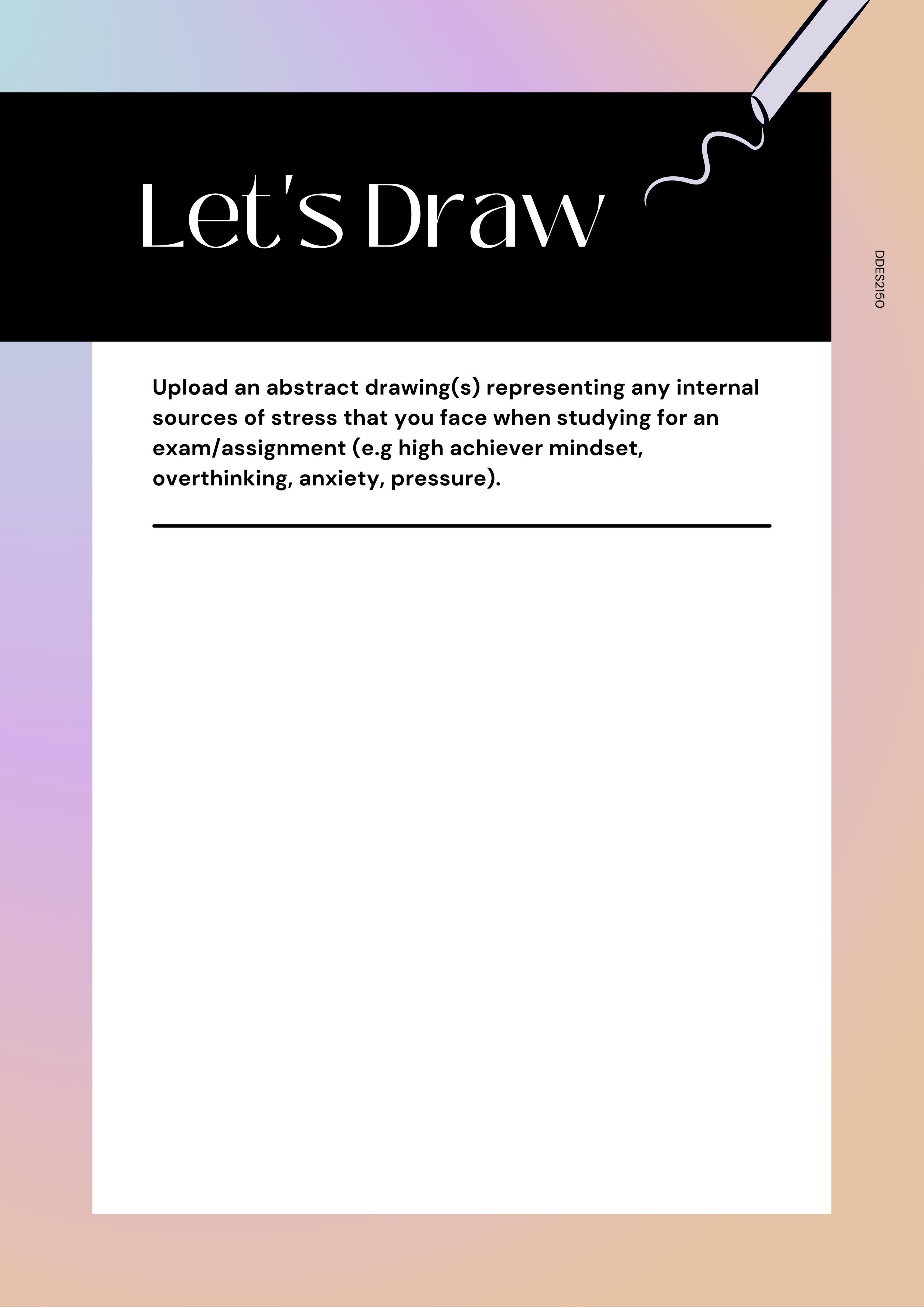
Cultural Probing Kit Findings - International Students
From the findings it can be determined that international students face a greater number of unique stressors.
A primary concern that they face is language barrier, which perpetuates internal sources of stress and anxiety i.e feelings of incompetency and inferiority. The ways they manage stress is very diverse. Additionally, the prominent mood prior to studying is worry and distress whilst studying.
Cultural Probing Kit Findings - Domestic Students
Out of the domestic students, guys appear to have more external societal stressors (e.g family pressure, fear of unemployment) than girls and more similar ways of coping with the stress i.e going to the gym. Their main moods prior to studying are distress and worry whilst the main mood during study is excitement (in contrast to international students).
Across the board, students don’t feel inclined to seek help or prioritise mental health and self-care despite facing stress when studying, as they have normalised these feelings. However, female users do believe that it is important.
INTERVIEW
Next, the two user groups were interviewed to gain a more in-depth insight into their attitude towards mental well-being during assessment/exam periods, their awareness of mental health support on campus and whether they seek help when required. In addition, international students were specifically asked about their experience transitioning to a new environment.
Here are some of the responses:
How do you feel about the mental health support services available on campus?
Domestic student:
"Personally, I have never used external counselling services and have relied more on direct support networks with close connections (friends and family)."
International student:
"I know them, but when I decide to go for a consultation, this consultation can also be a source of stress for me because of the language issue."
Describe your attitude towards mental health/self-care when studying for an exam/assignment.
Domestic student:
"With exams/assignments, I don't believe that seeking help from external parties will assist me."
International student:
"When I don't match the ability of my group members and need help with my work, I feel guilty inside and this leads to a strong feeling of inferiority, denying myself and feeling that I am always bothering others."
"What I worry about most is presentation. I will practice and read and recite the relevant content repeatedly."
Describe your attitude towards seeking help during times of stress that are induced by exams/assignments.
Domestic student:
"Generally, I don’t seek help since this stress isn’t unique or special in my opinion. Everyone is probably stressed around that time so I feel as though I shouldn’t be making a big deal out of it."
"It is often easy to neglect self care to create 'more time' for studying. However this leads to burnout."
International student:
"If you are willing to gain something from it, then these are not considered anxiety but make you more active in completing the task."
Key Findings
Domestic students had a more nonchalant attitude towards stress and don’t seek external help much
International students had more concerns about language and neglect mental health as they believe their stress translates to hard work.
These findings present unique perspectives that derive from a variety of factors. Domestic students may have normalised stress due to burnout culture and international students may feel afraid to seek help due to language insecurities.
WHAT IS THE PSYCHE OF UNSW STUDENTS?
I created an empathy map using insights from user research to visually represent diverse user perspectives, emotions, and needs during students’ stress periods. This detailed illustration enhanced my understanding of the user experience, guiding the development of more empathetic and user-centric solutions.
WHO ARE WE DESIGNING FOR?
Personas were created using the insights gathered from primary and user research. This helped me empathise and identify behavioural patterns across individuals, guiding interface design decisions to meet the needs of UNSW students.
STORYBOARD
Insights gathered from primary and user research prompted the creation of a user scenario and storyboard to help visualise how UniHelp will practically assist students in managing stress and explain the user experience in a real situation.
PART 03
Concept Development
BRAINSTORMING
In order to develop the design concept of a digital companion for UNSW students that would address the problem areas, serious consideration of user insights and primary research was essential.
I decided on the name UniHelp, a combination of the words University and Help, as it would be catchy and memorable for students.
In order to address the problems raised by students, I brainstormed design hypotheses of potential solutions and their outcome before narrowing them down to the three strongest ones:
Modernising the UI and translating resources to a mobile app platform will increase accessibility and make the process more seamless, providing a convenient platform for students on-to-go to prioritise their mental health.
Condensing the resources and simplifying the process of seeking external help will reduce cognitive strain and increase student motivation by enhancing time effectiveness and shortening the process.
Having language options (e.g counsellor filter preferences) will reduce cognitive strain and frustrations for international students, improving their access to support for their unique stresses.
CHOSEN IDEA
An exclusive digital companion for UNSW students, dedicated to boosting mental health awareness and support by:
Increase awareness and use of mental health support services available on campus
Encouraging users to self-regulate their stress through easily digestable, bite-size educational resources on self-care and mental health
Providing more access to resources for international students who require multilingual assistance
Don’t forget to rest your eyes and take a break from scrolling…
PART 04
Ideation
Wireframes
→
User Research
User Test
→
Mid-Fidelity
→
User Test
→
Visual Identity
High-Fidelity
Final Design Outcome
WIREFRAMES
A detailed rendering of specific interactions and user flows was digitally crafted in the form of wireframes turned low-fidelity prototypes.
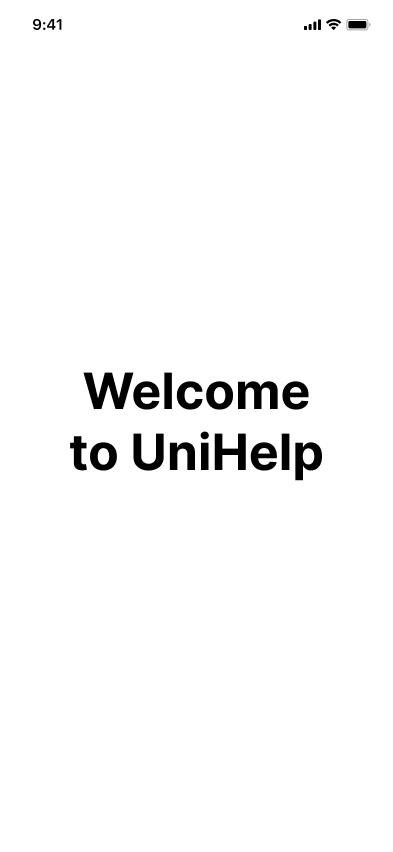
Title Screen
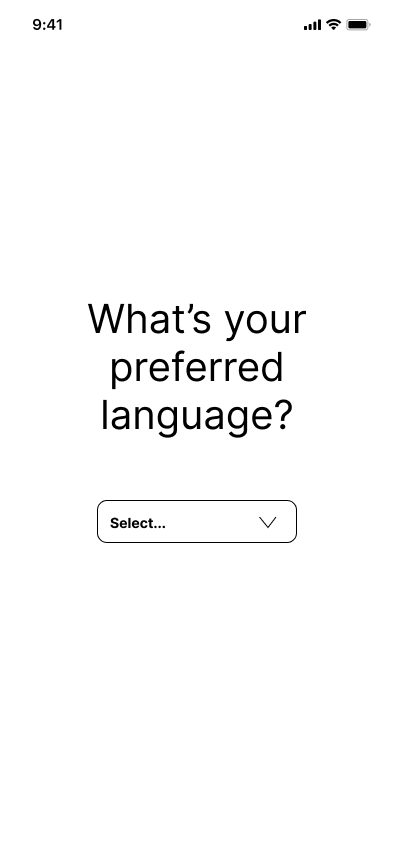
Preferred Language

Preferred Language Selected

Sign In

Homepage
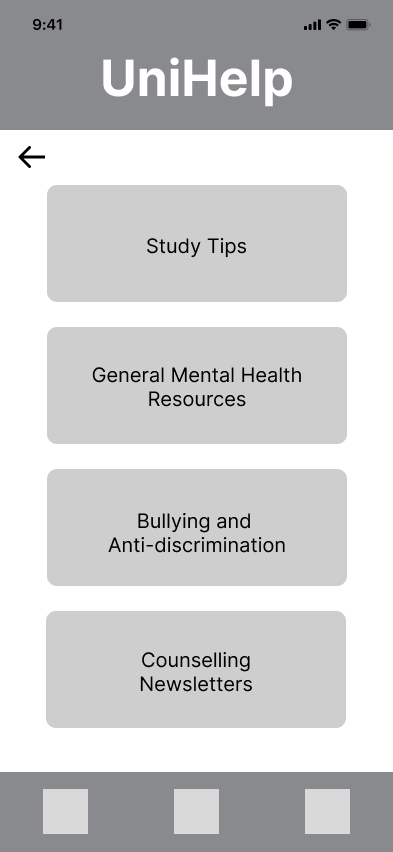
Mental Health Resources
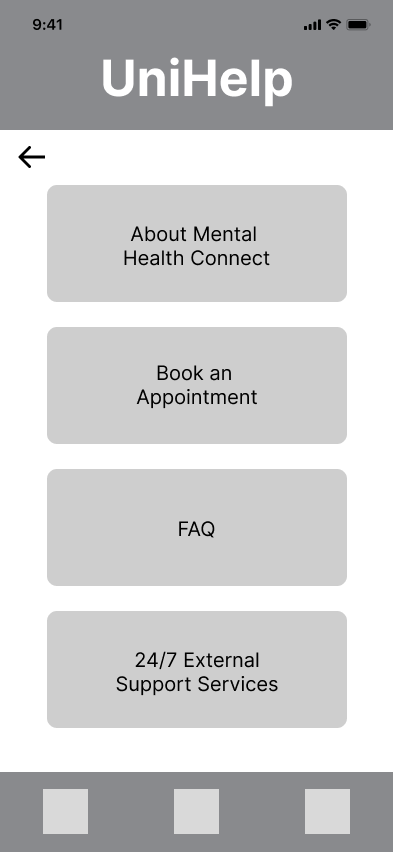
Support Services
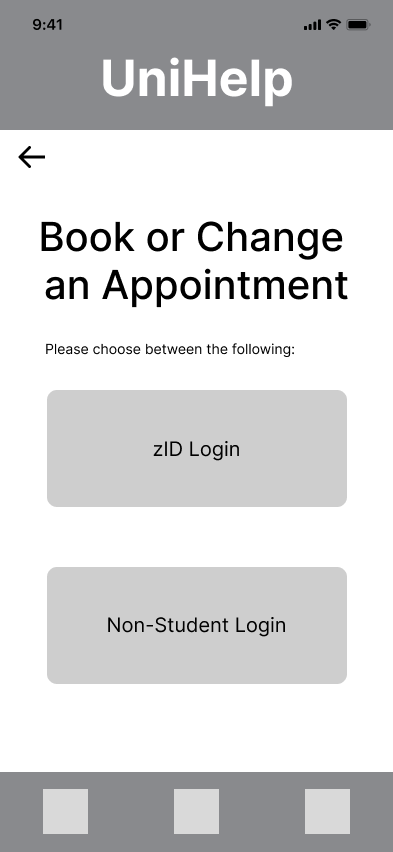
Book Appointment

Appointment Option

Schedule Appointment
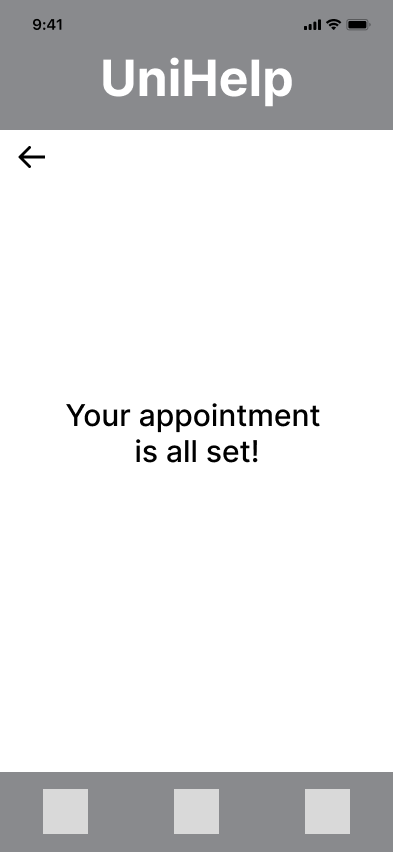
Appointment Confirmation

FAQ
USABILITY TESTING & FEEDBACK
To iterate and enhance the low-fidelity prototype, I conducted usability studies to gain a deeper understanding of users' mental models and address any pain points in the subsequent iteration. Here’s the first round of usability studies:
FURTHER USER RESEARCH - INTERVIEW
I conducted interviews with 6 UNSW students who are current or previous users of mental health support services on campus to highlight pain points they experienced.
The key frustrations were regarding:
The lengthy process to book a counselling appointment, the services
Resources being overwhelming, cluttered and hard to differentiate
Being assigned a therapist automatically with very limited choices
Key Developments Based Off Feedback and Research
The following changes were my focus to enhance the usability and user experience of UniHelp:
Clarity
Ensure information is easy to differentiate, clear and easily digestable.
Flexibility
Allow users to fix errors in their decision making and minimise room for potential mistakes.
Efficiency
Reduce the number of clicks required by condensing information when possible and eliminating unnecessary steps.
Comfort
Ensure the interface is intuitive and comfortable to navigate, allowing users to feel in control of their own mental wellbeing and choices.
FURTHER USER RESEARCH - SURVEY
Furthermore, quantitative research was conducted by sending out surveys to 6 UNSW students who are seeking mental health support, in order to gauge how useful they would find certain app features (using a rating system out of 10).
5 out of the 6 students selected that they would prefer using the app over the website if their chosen features were included. When asked why in additional comments, they stated that these features focused on storing useful information and that an app would be more convenient for students on the go. Others also emphasised flexibility and comfortability.
The highest scoring features on average were:
Saved profile details for recurring users of counselling services - 10
Search filters to select the right available therapist through specific criteria - 10
A function where you can see all saved educational articles/newsletters about mental health to read later/go back to, - 9
A function where you can see future and past booked appointments + details about the appointment - 9
A function where users can interact with a flag symbol to change languages (for international students) - 10
ITERATIONS - KEY DEVELOPMENTS
Significant advancements occurred from the low-fidelity prototype to the first iteration and finally to the last prototype. These advancements involved the incorporation of new features based off survey results, and modifications such as changing language options from the homepage.
USABILITY TESTING & USER JOURNEYS
After testing a refined prototype on 24 users, we received valuable feedback to improve and develop UniHelp. They were delegated two specific tasks that users would typically complete. We also asked them to rate the tasks using Nielsen’s usability framework. Here’s the second round of usability testing:
PART 05
Final Design Outcome
The final UniHelp prototype addresses user-identified usability issues to provide students with a frictionless, readily available platform to support their mental health journey throughout their studies

Title Screen
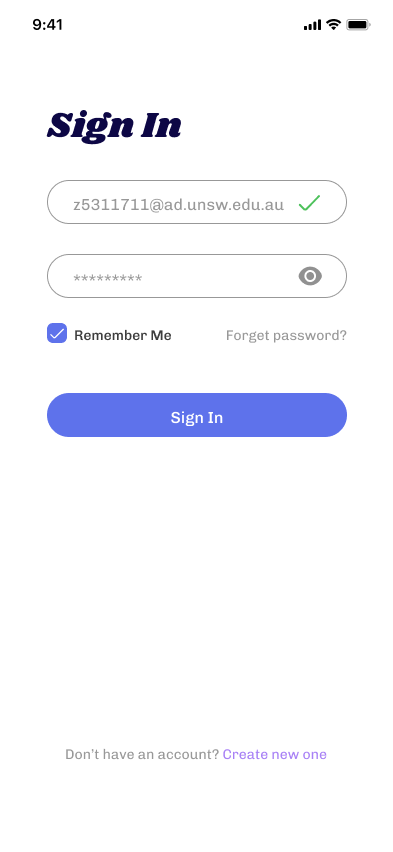
Sign In

Sign Up
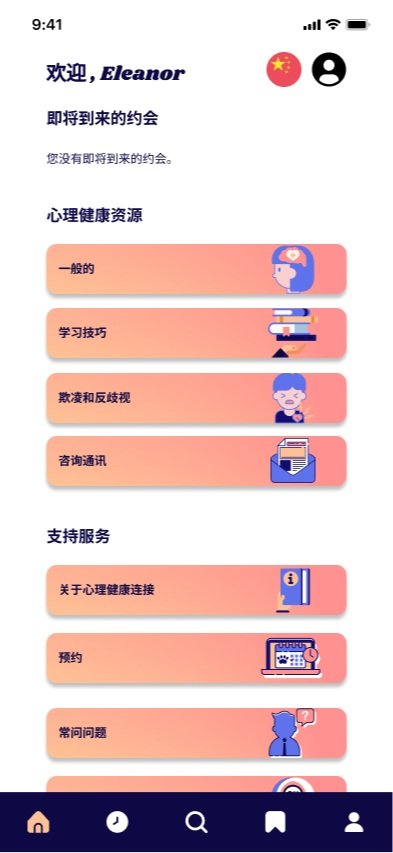
Homepage (Chinese Sign In)
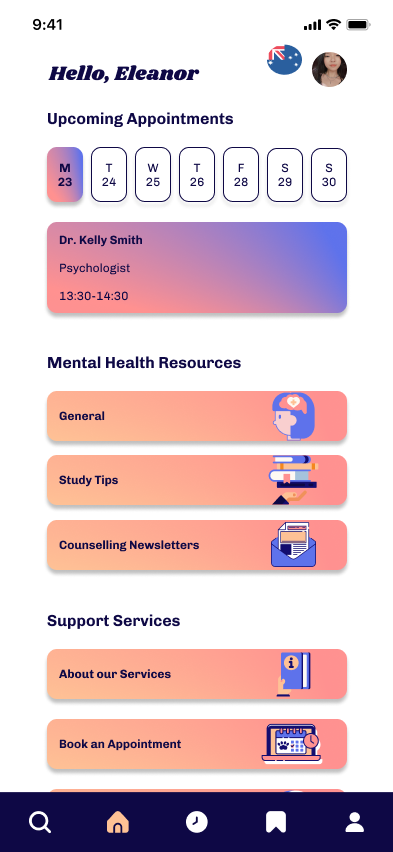
Homepage (Sign In)

Homepage (Sign Up)

General Articles

Example: Self-Esteem Article
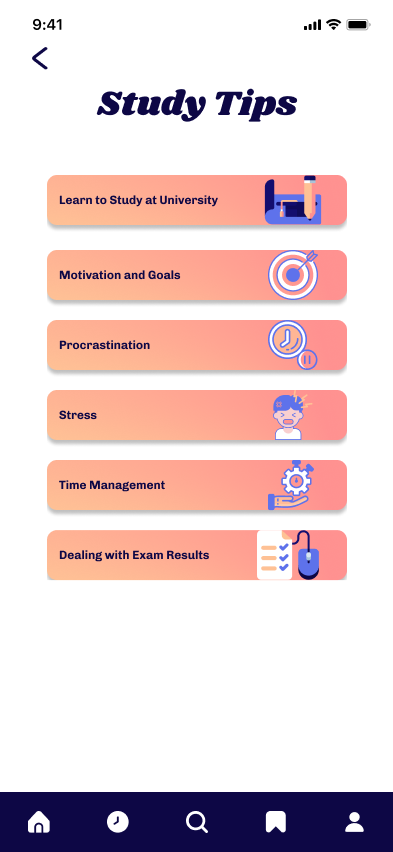
Study Tips Articles
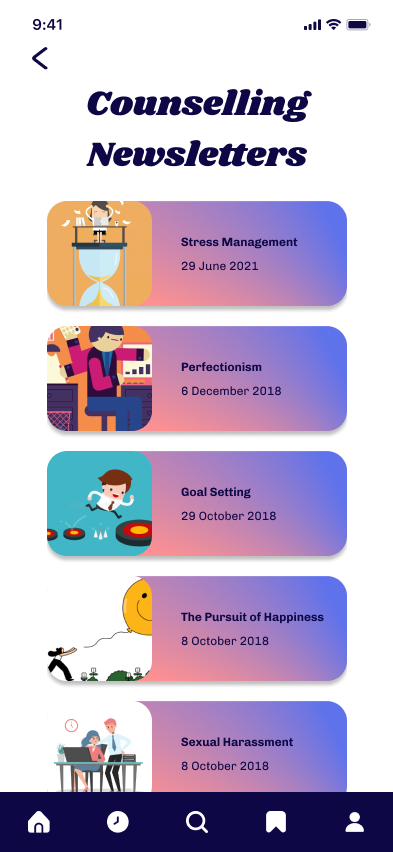
Counselling Newsletters

Book Appointment

About UNSW Services

Confidentiality Form (For First Timers)



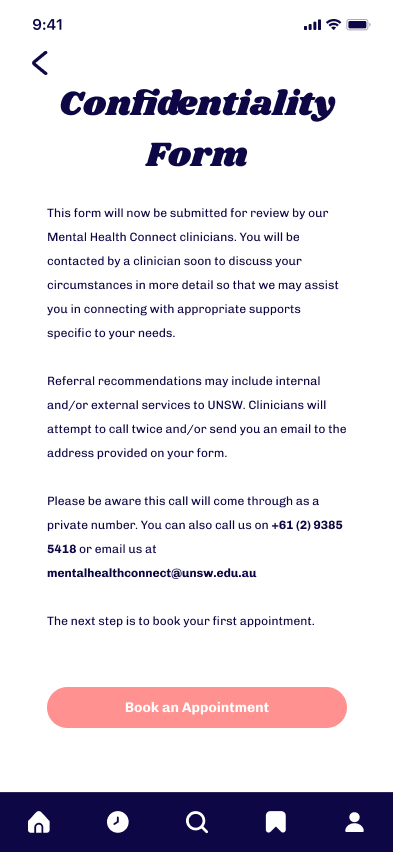

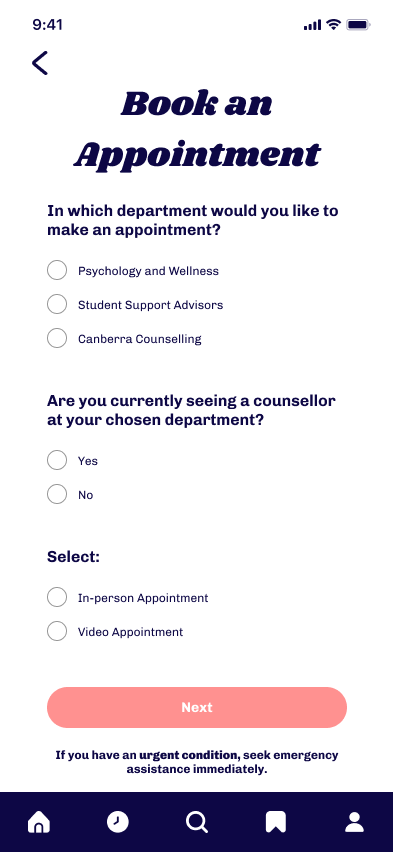
Appointment Preferences


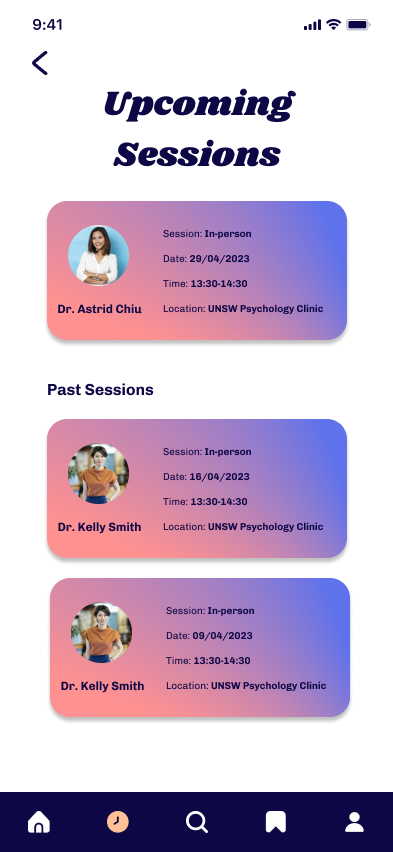
Upcoming & Past Sessions
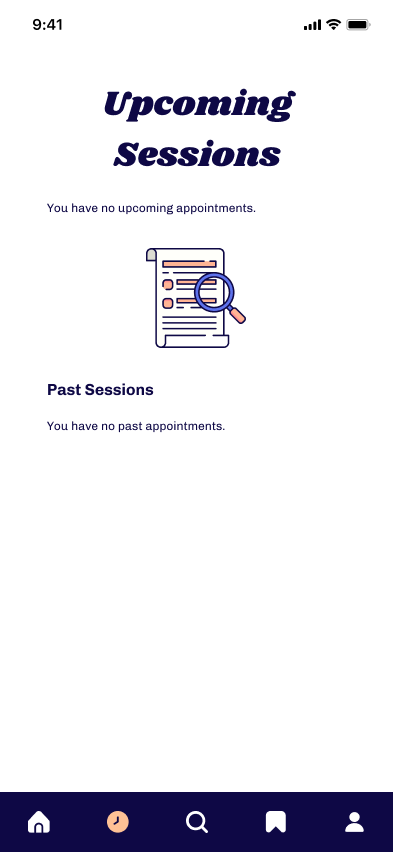
Upcoming & Past Sessions (New User)
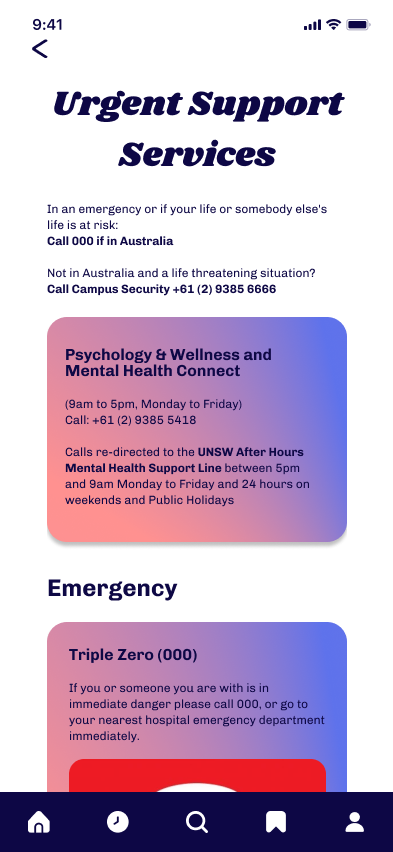
Urgent Support Services

Frequently Asked Questions
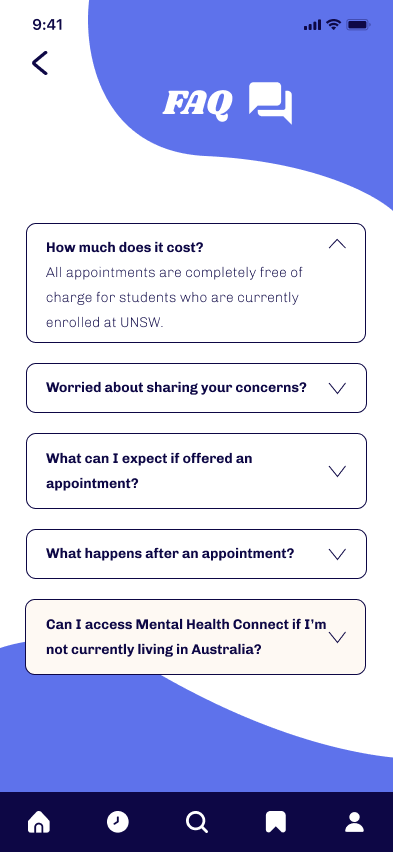
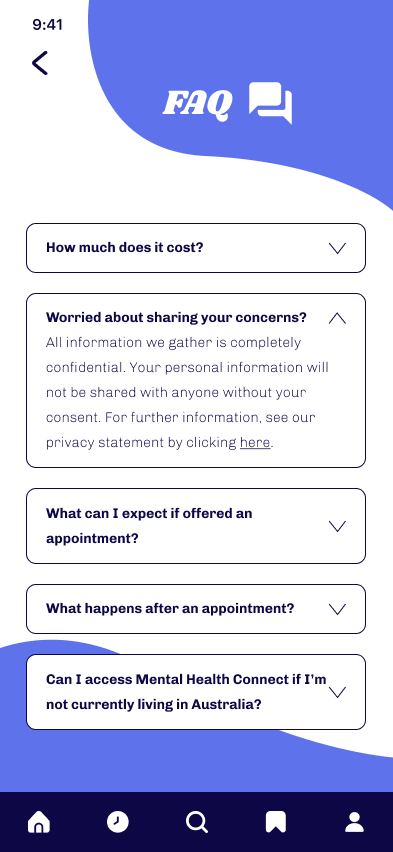
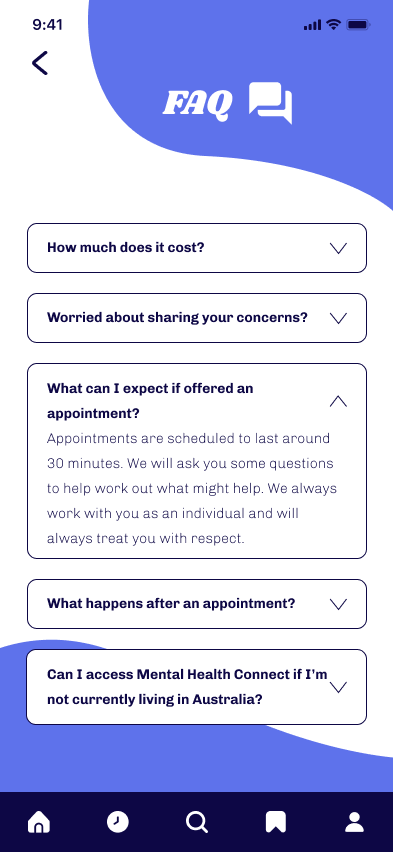
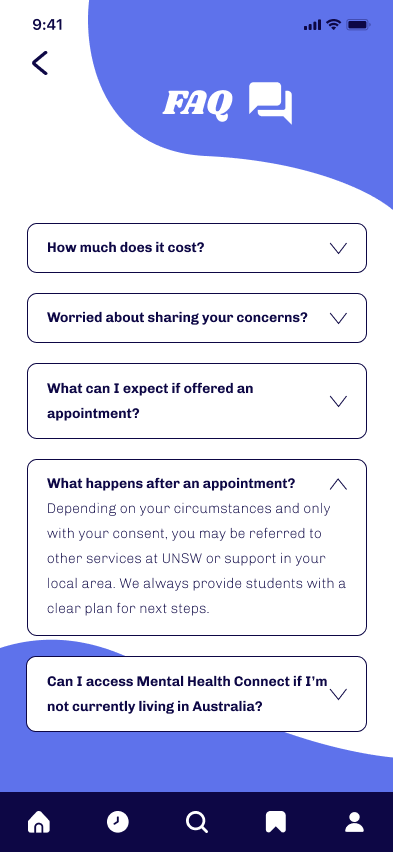


Searchbar

Saved Articles
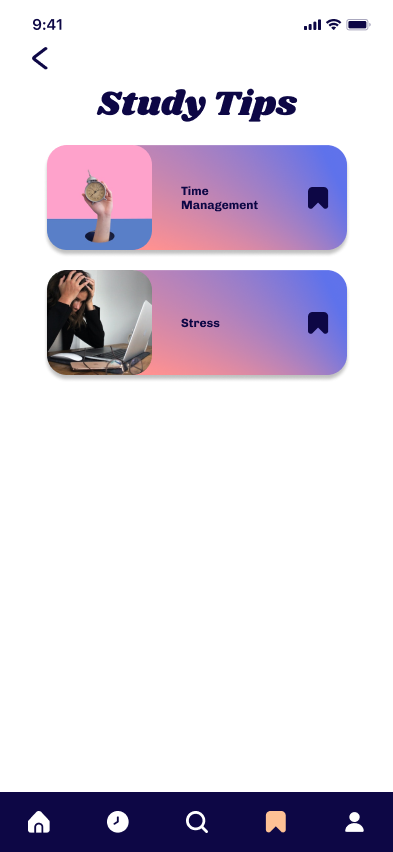
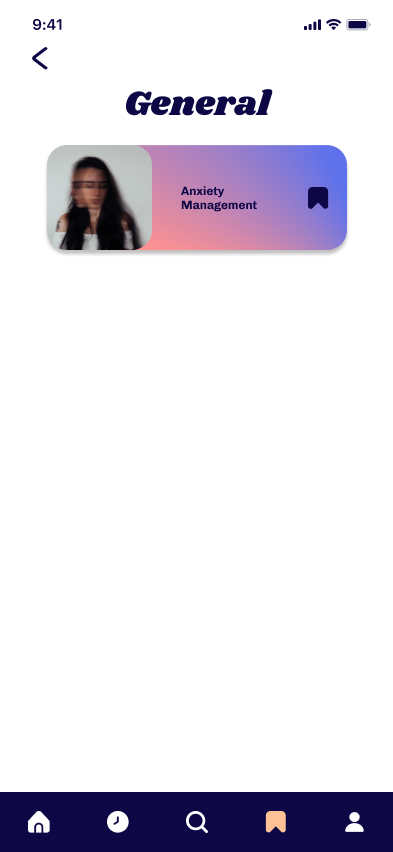


PROMOTION
As a mobile app alone does not effectively tackle the issue of awareness of mental health support and resources, I decided to create various interactive marketing materials with links and QR codes leading to the app.
UNSW’s Psychology and Wellness community and relevant university societies (Wellness, Psychology society) can participate in promotion on social media whilst the poster would be placed around common campus study areas for easy viewing.
Interview
Interviews with 6 UNSW students who have previously used/are aware of the services to elicit data about how they discovered the support services on campus to address the root issue of awareness
Key Insights
Students were made aware of the services through marketing tools, primarily social media marketing (especially Facebook and Instagram) and ARC newsletters, followed by posters promoted in common areas on campus.
They believe that awareness of mental health services on campus can be improved by differentiating the services and using various marketing materials.

Poster Mockups


Instagram Post
REFINED STORYBOARD
This refined storyboard depicts an improved scenario in terms of discovering the app’s existence through promotional materials and thus increased awareness of available services and resources.
PART 06
Key Features
01
LANDING PAGE
This is the landing page for users with options to sign into their existing UNSW accounts or sign up for a new account. Following sign/sign up, users are lead to an intuitive, scrolling landing page, giving a comprehensive overview of upcoming appointment schedules, mental health resources and support services.
02
MENTAL HEALTH RESOURCES
Users can navigate from the home page to seamlessly access a diverse range of credible mental health resources, such as general educational articles, newsletters and study tip articles.
03
SUPPORT SERVICES
Similarly, users can navigate from the home page to access essential information about support services that they can find on and outside of the school campus.
04
BOOK APPOINTMENT
With a more streamlined appointment booking process, users can easily seek external support for their wellbeing needs:
Effortless scheduling: Book external support with fewer clicks, saving users valuable time.
Enhanced personalisation: New filter options help user’s find the perfect fit for their specific needs.
05
SAVED RESOURCES
Users can categorise and review saved resources on-the-go, organising them into relevant folders that can be easily accessed from the navigation bar.
06
LANGUAGE OPTIONS
To assist international students with language barriers, I added multilingual options that can be intuitively altered through the home screen.
PART 07
Key Takeaways
UniHelp, focused on mental health, resonated deeply due to my personal passion and past experiences.
Especially having been so involved in the UNSW psychology community (as a previous marketing director of UNSW Psychology Society and studying psychology studies for a year)
Engaging directly with students fostered understanding of their diverse perspectives and challenges.
When it comes to a complex and sensitive issue such as mental health, I learnt the importance of user research and user testing to increase empathy towards a user group (if you are not part of that group) and to remain objective (if you are part of the target user group)
User research kept the design grounded in broad student needs, balancing personal passion with broader impact.
I learnt about the benefits of iteration through user testing and continuous feedback as designs can become narrow-minded without third-party perspectives.
The project provided invaluable insights into user-centered design and the importance of empathy, shaping my future design journey.
FURTHER DEVELOPMENTS
Usability Testing
I’d like to conduct more usability testing on the high fidelity prototype with user groups from different faculties and levels of study to further refine the design.
User Research
I want to conduct more user research on the requirements and pain points of students from different faculties and levels of study (i.e postgrad, PHD) to further my understanding of user needs.
Introduce Personalised Self Help Tools
To help motivate students to prioritise their mental wellbeing and maximise impact, I’d like to introduce artificial intelligence in the form of personalised self help tools and learning modules.
Community Forum
In order to help students feel further supported and empower students to take charge of their well-being I’d like to introduce a community forum where students can interact and develop a network of support.


































